B107
Castration (Bloodless)
Because of the lack of blood loss, this method
of castration is preferred. However, it should never be done on older
animals (> 3 months) with large testicles. If it is difficult to get the
elastrator band over the testicles, the animal is too big and a surgical
castration approach is needed.
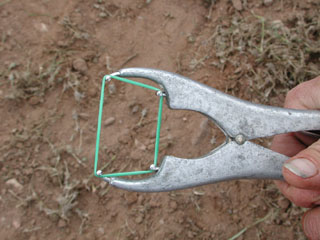
|
|
|
| Load
an elastrator band or "cheerio" onto the elastrator. |
|
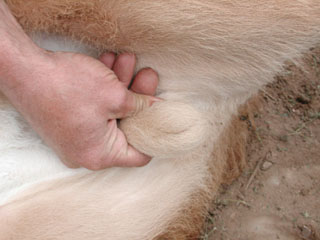
|
|
|
| With
one hand, find both testicles and force them to the bottom of the
scrotum or sac. If both testicles cannot be found, relax the hind
legs of the calf and try again.
Some animals may actually have a retained testicle (cryptorchid)
that requires professional surgical removal. |
|
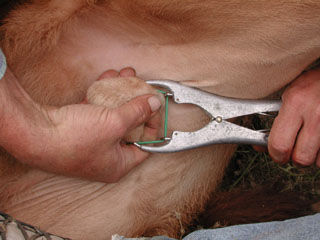
|
|
|
| Take
the elastrator instrument and place the elastrator band over both
testicles and as close to the body as possible. Make sure that the
prong ends and the elastrator band are next to the body. If they are
not, the elastrator cannot be removed once the band is collapsed. |
|
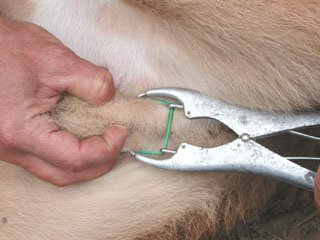
|
|
|
| Careful
attention should be given to ensure that both testicles are
completely on the outside of the elastrator instrument and not
between the elastrator and the body. |
|
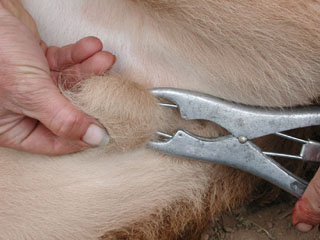
|
|
|
| Once
released, the elastrator band should be around the spermatic cord
only. If any testicular tissue is trapped, complications may arise
and the castration may not be successful. |
|
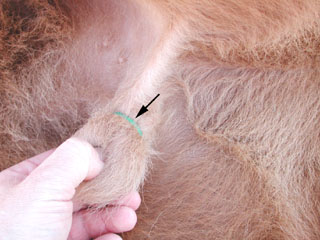
|
|
|
| This
picture shows an elastrator band in the proper place, with both
testicles deep in the scrotum. |
|






